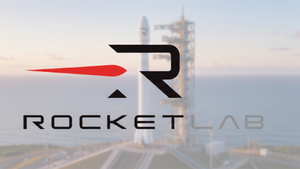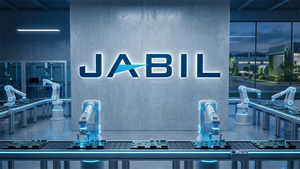— Launch of Reverse Deflection on Calyxo’s second-generation CVAC System promises endourologists greater intuitiveness and control in kidney stone procedures.
— A breakthrough 15 clinical presentations at the 42nd World Congress of Endourology and Uro-Technology (WCET), comprising 12 abstracts and three video sessions, help position Steerable Ureteroscopic Renal Evacuation (SURE) with Calyxo’s CVAC System as a standard of care for kidney stone treatment.
— CLEARANCE study reinforces the efficacy of the second-generation CVAC System, delivering ASPIRE-like outcomes in more challenging stone cases, while the two-year ASPIRE outcomes highlight the importance of maximizing stone clearance and leaving fewer fragments behind.
Calyxo, Inc., a medical device company advancing innovative solutions for kidney stone treatment, today announced the launch of Reverse Deflection on its second-generation CVAC System—an enhancement that empowers endourologists to perform the SURE procedure using their preferred steering mode. Calyxo also shared that for the first time, 15 presentations demonstrating the safety, efficacy, and benefits of SURE using the CVAC System were featured at WCET 2025, held in Phoenix, Arizona, September 8–12. These included randomized controlled, prospective, retrospective, real-world evidence, and ex vivo studies, with five newly reported data sets.
Reverse Deflection CVAC System
The second-generation CVAC System, launched in 2024, initially featured Standard Deflection—where the device tip bends upward when the steering lever is moved up. However, some endourologists primarily use Reverse Deflection systems, which bend the tip downward with the upward motion of the steering lever. Although easy to learn, switching between configurations can increase cognitive load on the physician. In response, Calyxo has acted swiftly to introduce a Reverse Deflection option, ensuring an easier and more intuitive navigation experience for these surgeons.
“The Reverse Deflection CVAC System has delivered outstanding results, achieving complete clearance of even large, dense stones, sometimes in just one hour during my evaluation,” said Margaret Knoedler, M.D., Assistant Professor at the University of Wisconsin School of Medicine and Public Health, Department of Urology, who trialed the device during early market evaluation. “This offering reflects Calyxo’s agility and excellence in responding to the needs of endourologists. By delivering a reverse deflection option, they’ve empowered more physicians like myself, who prefer this mode, to access the benefits of the CVAC System with greater control and familiarity.”
New Clinical Evidence Highlights Long-Term Impact of the SURE Procedure with the CVAC System and Consistent Outcomes Across Studies
Also at WCET, several new data were presented on the SURE procedure and the CVAC System, among which were results from a study titled Steerable Ureteroscopic Renal Evacuation Reduces the Risk of Healthcare Consumption Events at 2 Years Compared to Standard Ureteroscopy (URS).1 Karen Stern, M.D., Associate Professor of Urology at the Mayo Clinic College of Medicine and Endourology Fellowship Program Director in Arizona, presented the one-year results from the ASPIRE randomized clinical study during WCET 2024, wherein they evaluated emergency department (ED) visits, hospitalizations, and retreatments (healthcare consumption events, or HCE) one year post-procedure in patients undergoing SURE with the CVAC System or standard URS. This presentation reported the two-year results, the first of its kind, on the aspiration of kidney stones. A total of 101 subjects were included in the analysis (SURE = 46, URS = 55). At two years post-procedure, there were significantly fewer HCEs in the SURE cohort compared to the URS cohort (4.3% vs. 20%, log-rank p = 0.02). This corresponded to a 73% reduction in HCE risk with SURE compared with URS (HR: 0.27, 95% CI: 0.09-0.80, p = 0.02). After adjusting for baseline stone volume, the index treatment remained a significant predictor of HCE (adjusted HR, 0.2; 95% CI, 0.04-0.90; p = 0.04). The study also found that Residual Stone Volume (RSV), and not the binary Stone Free metric, was the only significant predictor of post-procedure HCE at two years, besides age.1
Brian Eisner, M.D., Chair of Urology at Tulane University School of Medicine, also presented findings from the CLEARANCE study, a prospective evaluation of the second-generation CVAC System in 30 patients (32 renal units) across 10 surgeons. The average stone volume prior to SURE was 703.6 mm³, with a mean density of 1,203 Hounsfield units (HU). The study showed high stone clearance rates (93.8% at POD 1, 96.2% at POD 30) and low RSV 36.0 mm³ at POD 1 to 14.1 mm³ at POD 30), regardless of initial stone burden and more demanding stone density. No device-related complications were reported, and all adverse events were mild and resolved without issue.2
“The data presented at WCET 2025 reinforce what many of us are seeing in practice—the second-generation CVAC System is a reliable, effective, and differentiated solution for stone clearance,” said Dr. Stern. “The CLEARANCE study presented by Brian Eisner, M.D., reinforces the consistency of outcomes we've seen across trials—even in more complex cases with higher-density stones. This is particularly meaningful given the ASPIRE two-year findings identified residual stone volume as the strongest predictor of long-term healthcare consumption events. This is the first and only study to track long-term outcomes of an aspiration procedure, which showed that patients treated with SURE using the CVAC System experienced significantly fewer unplanned post-op care events compared to those treated with traditional URS. As technologies evolve, adopting standardized volumetric metrics like RSV will be key to guiding care and ensuring lasting benefits for patients.”
Among the other data presented was a large real-world retrospective study3 and the first prospective comparison of the SURE procedure with the CVAC System and Flexible and Navigable Sheaths (FANS). This study demonstrated that the CVAC System outperformed FANS in an unmatched cohort, where the SURE arm had a baseline stone volume three times that of FANS.4 Additional studies further demonstrated its efficacy in high-burden and complex cases.5-8
“In just over 15 months since launching the second-generation device, Calyxo has accelerated innovation in the kidney stone market—driving both product iteration and generating pathbreaking clinical evidence,” said Joe Catanese, Chief Executive Officer, Calyxo. “With the introduction of our latest enhancement featuring Reverse Deflection, we believe we’re unlocking access to a better standard of care for thousands of kidney stone patients. We’re also incredibly encouraged by the growing body of research on the CVAC System emerging from leading institutions nationwide, which proves the consistency of outcomes across studies. The two-year ASPIRE outcomes are particularly compelling, given their impact on the overall patient care ecosystem. Our presence at WCET this year is a powerful reflection of the technology’s potential—not just for today’s patients, but for the future of urologic innovation.”
About Kidney Stones
According to the American Urological Association, approximately 10% of people in the U.S. will experience a kidney stone in their lifetime.9 Kidney stone disease is a painful condition that can result in significant healthcare costs, with direct treatment costs projected to reach $4.1 billion annually by 2030.10
About the CVAC System
FDA-cleared in 2024, the second-generation CVAC System enables a minimally invasive approach for kidney stone clearance. It is an all-in-one solution designed to efficiently and effectively remove kidney stones using irrigation and vacuum aspiration to continuously clear fragments during and after laser lithotripsy—helping physicians achieve a stone-free outcome.
About Calyxo, Inc.
Calyxo, Inc. is an innovation-driven medical device company focused on improving care for patients with kidney stones by delivering paradigm-shifting solutions that enable urologists to safely, effectively, and efficiently achieve unrivaled clinical outcomes. Learn more at calyxoinc.com.
“CVAC” and “Calyxo” are registered trademarks of Calyxo, Inc.
- Stern et al. MP16: 01 Steerable ureteroscopic renal evacuation reduces the risk of healthcare consumption events at 2 years compared to standard ureteroscopy (URS). Conference Presentation, WCET 2025.
- Eisner et al. MP16: 17 Prospective Evaluation of Steerable Ureteroscopic Renal Evacuation with the Second-Generation CVAC® Aspiration System: Findings from the CLEARANCE Study. Conference Presentation, WCET 2025.
- Klyde et. al. MP08: 08 Real-World Experience with CVAC 2.0 for Steerable Ureteroscopic Renal Evaluation in a Large, Multi-Site Academic Institution, Conference Presentation, WCET 2025
- Cabo et al. MP16: 19 Prospective, Real-World Evaluation of CVAC 2.0 In-Scope Aspiration System versus Flexible and Navigable Ureteral Access Sheath for High-Volume Stone Disease. Conference Presentation, WCET 2025.
- Rings et al. MP08:16 Steerable Ureteroscopic Renal Evacuation with the CVAC System – A Retrospective Study Evaluating Outcomes for Complex Stone Patient). Conference Presentation, WCET 2025.
- Chen et al. MP19: 06 Steerable Ureteroscopic Renal Evacuation (SURE) in real-world practice: a single center outcome analysis. Conference Presentation, WCET 2025.
- Ostergar et al. MP25: 12 First In-Vivo Multicenter Experience with the novel CVAC aspiration ureteroscope. Conference Presentation, WCET 2025.
- Cook et al. MP25: 15 A Preliminary Retrospective Analysis of CVAC Ureteroscopy Stone Clearance and Complications. Conference Presentation, WCET 2025.
- AUA Guidelines: Medical Management of Kidney Stones 2019.
- Roberson, Curr Urol Rep 2020; 21:18.
View source version on businesswire.com: https://www.businesswire.com/news/home/20250911893155/en/
Contacts
Media Contact:
Glenn Silver
glenn.silver@finnpartners.com
M: +1 973 818 8198





